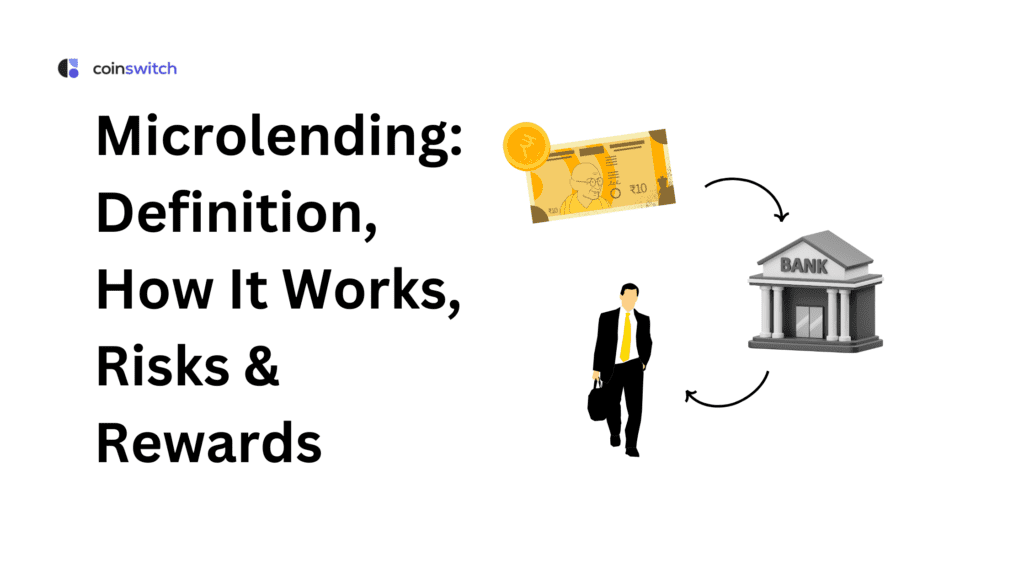Microlending has become popular, making financing available to some of the world’s poorest regions. With more than 140 million borrowers, microlending offers loans to individuals who are not creditworthy to avail of bank loans. However, microlending comes with its own set of risks and rewards. Before you dive deeper, understanding how microlending works is crucial.
What is microlending?
Microlending, also called microfinance, provides small loans to people who don’t have access to standard banking services. This type of loan is very important for the survival of millions of micro, small, and medium enterprises (MSMEs). It strengthens the country’s economy and boosts the national GDP.
Furthermore, MSMEs employ a large number of people in India. Thus, microfinance institutions indirectly create jobs in a country where millions struggle to find employment. Microfinance institutions (MFIs) or microlenders specialize in providing small loans to those needing capital to start their businesses. This helps their communities grow and deal with poverty-related problems.
Read More: What is NFT lending?
How microlending works
In countries like Bangladesh and India, microlending has made giant strides. Small rural banks were created to support local businesses. These banks provide loans to economically weaker sections, especially women, to help them start small businesses.
Microfinancing helps lenders and debtors find each other based on their specific needs. Microlending comprises small business loans, but the people who use it and their goals differ from those who avail loans from banks. For example, microlending is based on helping the borrower grow. Microlending can be used for personal purposes, but most lenders use it as an investment. The goal is to make it easier for business owners in rural and poor places to access banking services.
How do consumers use microlending
People get loans through microlending, but they find it hard to get bank loans. Most individuals who take out small business loans aim to set up businesses or scale up existing ones. For instance, women in rural areas can use a sewing machine to set up a tailoring business. Others will invest using livestock, farming supplies, or things for their small shops.
- People often use microlending for their essential needs. For some people, taking out a loan pays for healthcare costs, education, or repairing their homes. A simple loan may make a big difference in your life. It supports people in earning a livelihood, gaining independence, and living a better life.
- Borrowers are expected to make repayments every week or every month. Microfinance institutions and peer-to-peer companies are the usual channels for distributing loans. With these systems, you can get flexible time and lower interest than from informal moneylenders.
- Microlending provides people with the help they need to manage their finances. It allows individuals to become financially independent and manage their future.
Read More: All about DeFi loans: How does DeFi lending work?
Microlending: Risks and rewards
The idea of microlending isn’t new, but the Internet and the ongoing or long overdue broadening of the business lending market have changed how people talk about it.
Companies now consider microloans legal, and some even prefer using them. But, as with any other type of business funding, there are risks and benefits that people who want to borrow money for their businesses must be aware of. The risks are even more important than the benefits. If not, they might hit a wall on their way to microlending success.
Risks of Microlending
- Over-indebtedness
Often, people take out more loans than they can manage to pay off, causing them to fall into a debt trap. Thus, people may constantly borrow to pay off previous debts, leading to stress, financial hardship, and financial problems.
- No Regulations
Several countries around the world lack regulations to control microlending. Hence, there is an increased danger of exploitative lending, unjust interest rates, and fraud. Without rules, people who borrow may be harmed, and lenders could commit dishonest actions against those who need support.
Rewards of Microlending
- Financial Inclusion
Borrowing money through microlending is accessible to consumers who don’t have access to traditional banks. It offers low-income people a way to get cash for necessities or new businesses, encouraging more people to participate in the economy and allowing them to get the financial help they need.
- Helping Women Become Stronger
The main aim of microlending is to support women who want to start or grow their own businesses. Financial freedom can help them become self-confident and improve their family life. Social change begins when it helps women entrepreneurs, and many communities are positively influenced.
- Job Creation
Local employment is created when small businesses get microlending support. A new business can provide jobs using hiring, which benefits communities struggling with high unemployment. This helps the community grow, maintains financial security, and provides extra income opportunities for those around the borrower.
- Community Development
Smaller loans support new businesses, which helps enhance local communities. Truly successful companies help upgrade local facilities, healthcare, and education. With time, the positive changes may bring better living conditions and encourage lasting growth in neglected regions.
Microlending organizations
As technology improves, more companies are entering microlending. The following list doesn’t include all microloan options, but it should give buyers and lenders a good idea of the big players in the field and how they might compare.
Grameen Bank, Bangladesh
Grameen Bank is the brainchild of Muhammad Yunus, who pioneered the concept of providing small loans. The bank offered microcredit to poor individuals, focusing on women. The spectacular success of this business model inspired the establishment of similar microlenders in different parts of the world, including India. Regional Rural Banks and the NABARD Self-Help Group program are initiatives that focus on improving financial inclusivity in India.
Equitas Small Finance
Equitas offers loans ranging from Rs. 2,000 to Rs. 35,000 to the economically weaker sections.
ESAF Microfinance
ESAF offers loans in the range of Rs. 50,000 to Rs. 5 lakh to economically and socially challenged sections of the population. The tenure of the loan ranges from 12 months to 35 months.
Fusion Microfinance
Provides loans ranging from Rs. 3,000 to Rs. 60,000, the loan tenure is between 8 months to 2 years.
Annapurna Microfinance Pvt. Ltd
Provides loans between Rs. 1,500 and Rs. 25 lakh, the loan repayment period is between 12 months and 240 months.
Some investors find microlending to be a profitable venture. Microloans give you cash flow rewards and help you earn in different ways. It often has higher rates of return than other options that give you a steady income. One bad thing about microloans is that they might be risky based on how good the borrower’s creditworthiness is.
The bottom line
Learning about microlending, it’s clear that it’s more than just a way to get money. Transformation happens because of it, which brings dreams to life and makes communities stronger. You now fully understand what microlending is, how it can be used, how you can invest in it, and how the benefits and risks of microlending work together.
FAQs
1. How does microlending work?
Microlending brings together a client and a lender for a small, non-traditional loan. People often avail of microloans when they cannot get loans from local banks. They may have bad credit or need a smaller loan than what banks offer.
2. How does microfinance work?
People or groups with low incomes who would not usually be able to obtain bank loans can do so through microfinance. Microfinance lets people get small business loans that are fair, safe, and in accordance with ethical banking practices.
3. Who benefits the most from microloans?
Data shows microfinance doesn’t fully help everyone escape poverty. However, it can be useful for people like skilled business owners. On average, the results may not be life-changing, but some groups, like experienced businesses, often experience significant changes for the better.








